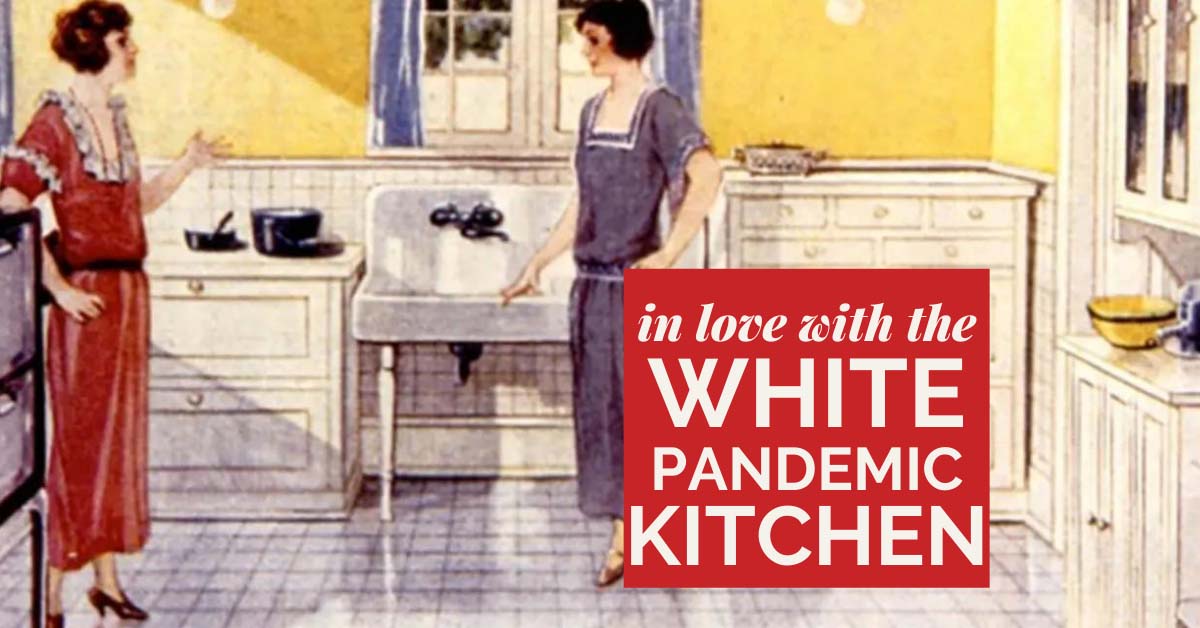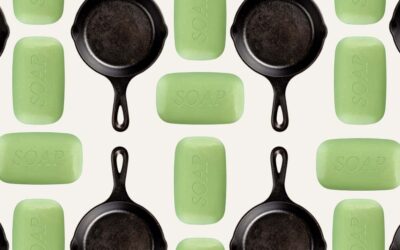Mom used to have a stack of HGTV magazines on the living room coffee table: Part decor, part light reading, and part inspiration for future projects. Flipping though for the last ten years, it still surprises me how fast home trends come and go.
Remember the bright pink front doors to painted fabric chairs of 2012? Yeah, about that…
Still there’s one trend I’ve been head over heels for since I was twelve: subway tiles. Ten years later and those mags are still showcasing subway tiles. While I could take credit for having a natural knack for spotting the timeless design elements among the toss outs…there’s an easier explanation as to why white kitchens have stayed in style: history.
The History of All White Kitchens
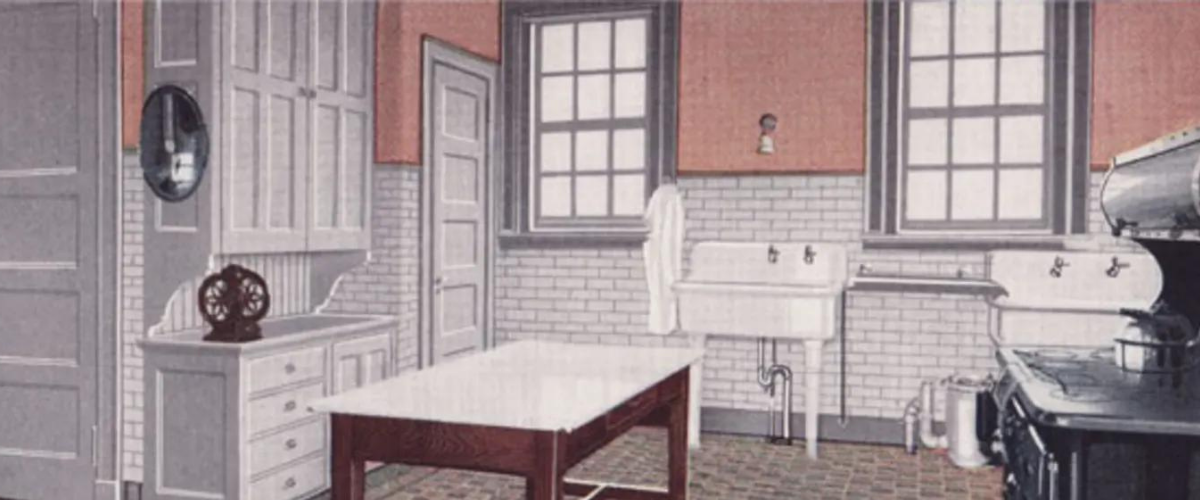
At first glance, all-white kitchens seem a nightmare of a design choice. I grew up in a family with nine kids, which meant no amount of cleaning would ever make our kitchen look presentable. Is the all-white kitchen something only practical in LA mansions and NYC highrises?
It can’t be. The all-white kitchen trend grows in popularity every year. And the home I live in now? While it’s main kitchen accent color is a trend-forward hunter green….the base is white. White penny tile, white walls, and white windows and trim. My roommate went through a dozen paint samples before deciding on not just white…but the right white.
As it turns out- there’s a historical reason for our obsession with white interiors. And it started with a pandemic.
Jump back a hundred years to 1918 where the United States, like most of western civilization, was fighting a war on two fronts: WW1 on one side…and the Spanish Flu on the other.
An estimated ⅓ of the world’s population became infected with this strain of flu. The virus disproportionately affected young people. Of the nearly 675,000 to die, half were young people aged 20-40. Paired with the 117,000 American casualties of WWI, the country lost a generation of young people.
This was the worst pandemic in American history…until when, in September of 2021, the death count from COVID-19 (and following strains) passed 675,400. As of right now, the count stands at 798,000 deaths in America and continues to grow.
White Kitchens- The Color of Sanitation
Up until this point in history the spread of any disease was blamed on genetic makeup or poor living conditions. But this pandemic- because of the way it affected both middle and upper class society- would lead to widespread adoption of new theories on disease prevention.
No one in the early 20th c. really understood how germs worked. “Germs” and “dirt” were considered the same thing. With this basic hypothesis in hand, everyone was obsessed with cleanliness. As a result, hospitals decided the easiest way to get ahead of dirt was with an all white backdrop.
Subway tiles moved from subways to the hospital and then to restaurant kitchens. Adding white finishes was a way for businesses to signal their commitment to sanitation and boost revenue with a germ-phobic consumer base.
And after hospitals and restaurants made the switch to all white- homeowners followed suit. The color white became the color of sanitation and cleanliness. The fact that in 1918 most appliances were only offered in white anyway only boosted adoption faster. Suddenly matching your appliances and interior became the trend of the century.
Of course in COVID times, we understand that a can of lysol outweighs the merits of a wall color. We know viruses and bacteria don’t necessarily live in that haphazard splash of marinara on the cabinet, but are unseen on any surface even if it looks clean to the naked eye. So why do we hold on to the all-white trend?
The Science of the Color White
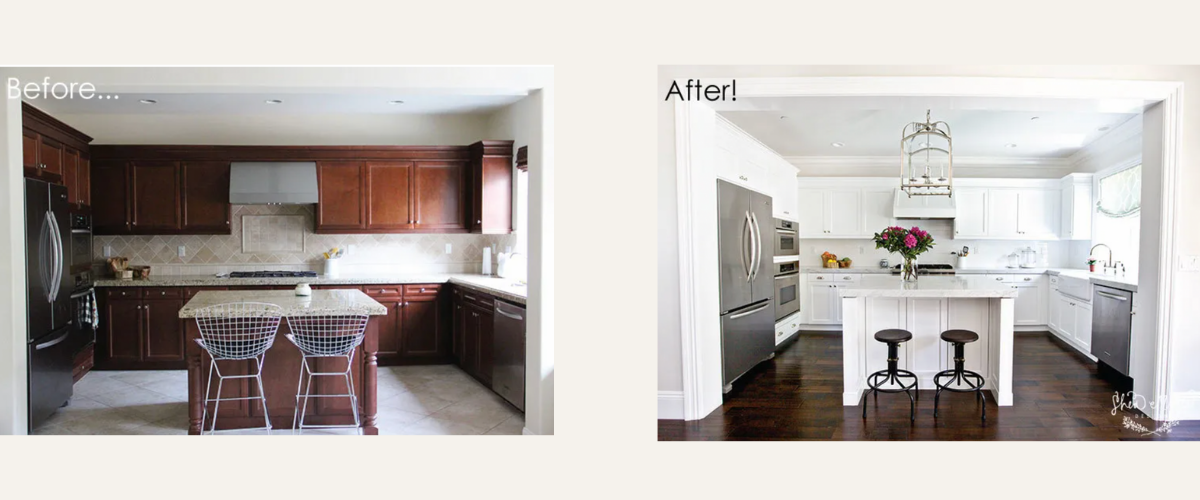
Like it or not, open concept homes are the go-to in new construction. (We prefer not to live in a tinderbox…but that’s just our opinion) Modern design has channeled our desire for openness and natural light. White rooms give that illusion whether you have 8’ or 14’ ceilings.
There’s science behind how our eyes perceive the color white. Think back to your high school anatomy class. Remember learning about the rods and cones in your eyes?
Don’t worry- this isn’t a pop quiz.
Cones are the part of the eyes that make out shapes and colors. Rods, on the other hand, transmit things in black and white to the brain. These rods are sensitive to dim light. Darker rooms mean lost vision. In turn, our brains associate this loss of vision with night time…and enclosed spaces.
But light hues create a biological trigger that says “hey! We’re outside in the open air! This is fresh and full of energy!”
White kitchens just feel bigger. Even though the room itself remains the same color, we trick our brains into thinking the space is open.
Change the color and transform the space. The illusion of space you can get from the color white is one of the biggest reasons we loved the all-white kitchen for the last century.
The Color That Last Through A Lifetime of Kitchen Design
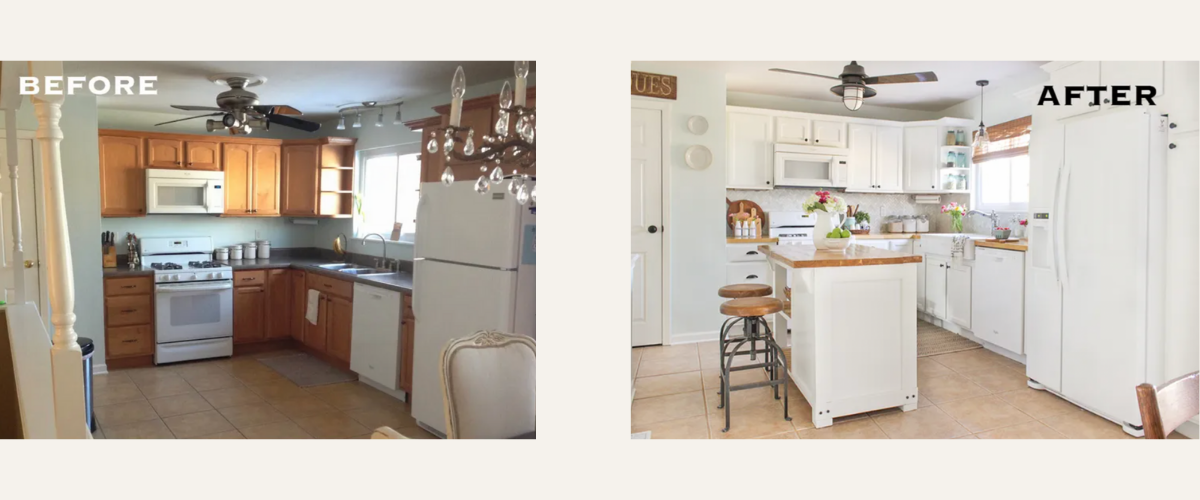
Most of us aren’t hiring interior designers to come in and makeover a room in one go- we’re collecting and designing around our travels, our evolving tastes, and our ongoing influences. Which is why a great white neutral is such a powerful base in home design.
The right white goes with most anything. The original painting you haul back from Buenos Aires? The woven blanket from Iceland? The family heirloom Venetian vase? A good white gives you the perfect backdrop for showcasing the pieces you love most.
Plus, it’s timeless.
Why does this matter?
Think back to 2010. Remember chevron? My mom painted two different rooms with chevron patterned walls. Or remember when Chip and Joanna told you shiplap would never go out of style? They lied.
But the color white can shift with the objects and accents in a room. You don’t need to worry about it becoming outdated- and a quick touch-up paint every now and then means your home will always have that fresh and open feel.
The benefits to an all white kitchen don’t stop there. In addition to attractive style, this kitchen design is also:
- Easier to clean- and make them look clean. Yes, really. We have white walls in part of our kitchen right now and it’s so simple to wipe them down with pinesol to refresh them. Just make sure you’re using high-quality paint for high-traffic areas. (We have Sherwin Williams Alabaster in Velvet throughout our house)
- A kitchen remodel has a 57% return on investment. Pair that with white cabinets, which 43% of homeowners prefer, and you’ve got a kitchen guaranteed to sell.
- Versatility. Modern, farmhouse, even industrial- all these looks are born from an all white kitchen.
(Design) History Repeats Itself
The all-white kitchen isn’t the only home design trend to repeat itself. Read about our up and down affair with floral wallpaper throughout history here.
Have other home trends that you’re excited to see make a comeback? Reach out to us on Instagram and let us know!
Until then,
Madeline Runyon
Managing Editor

